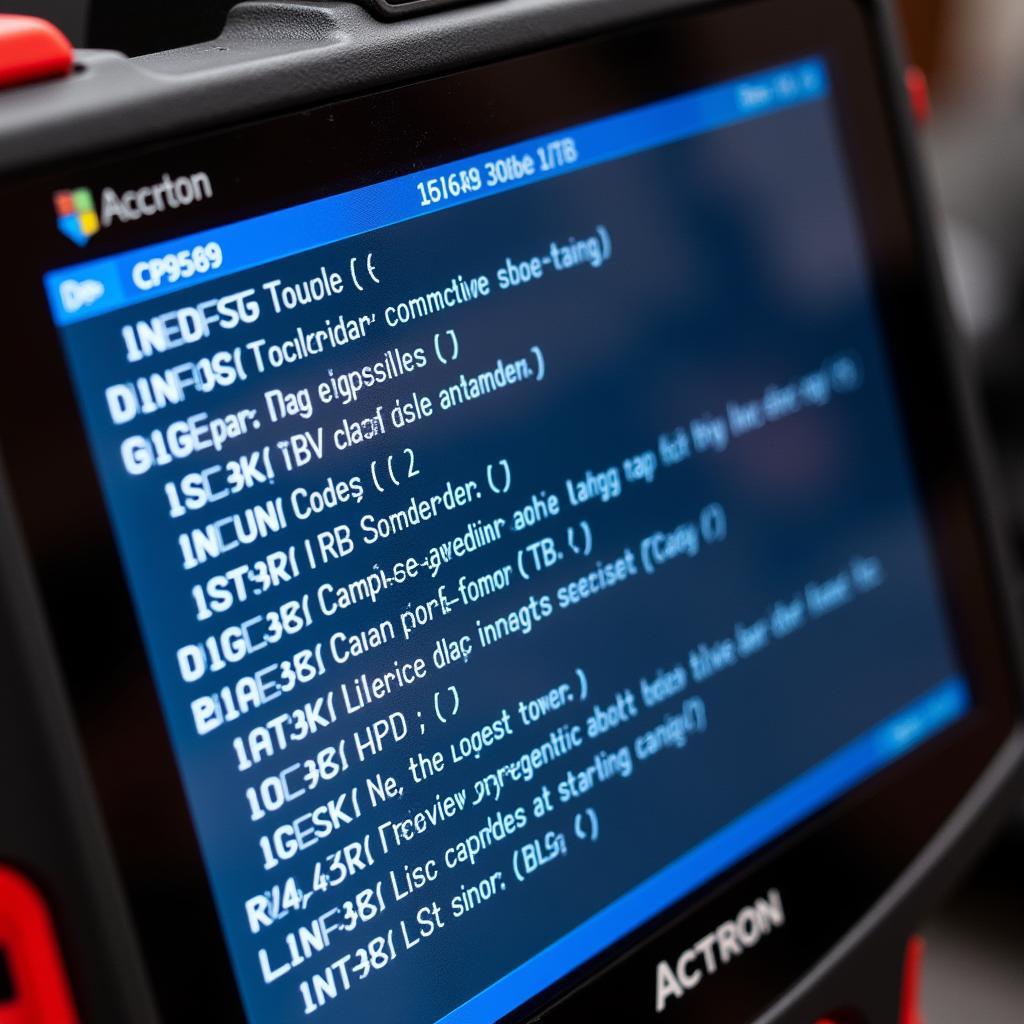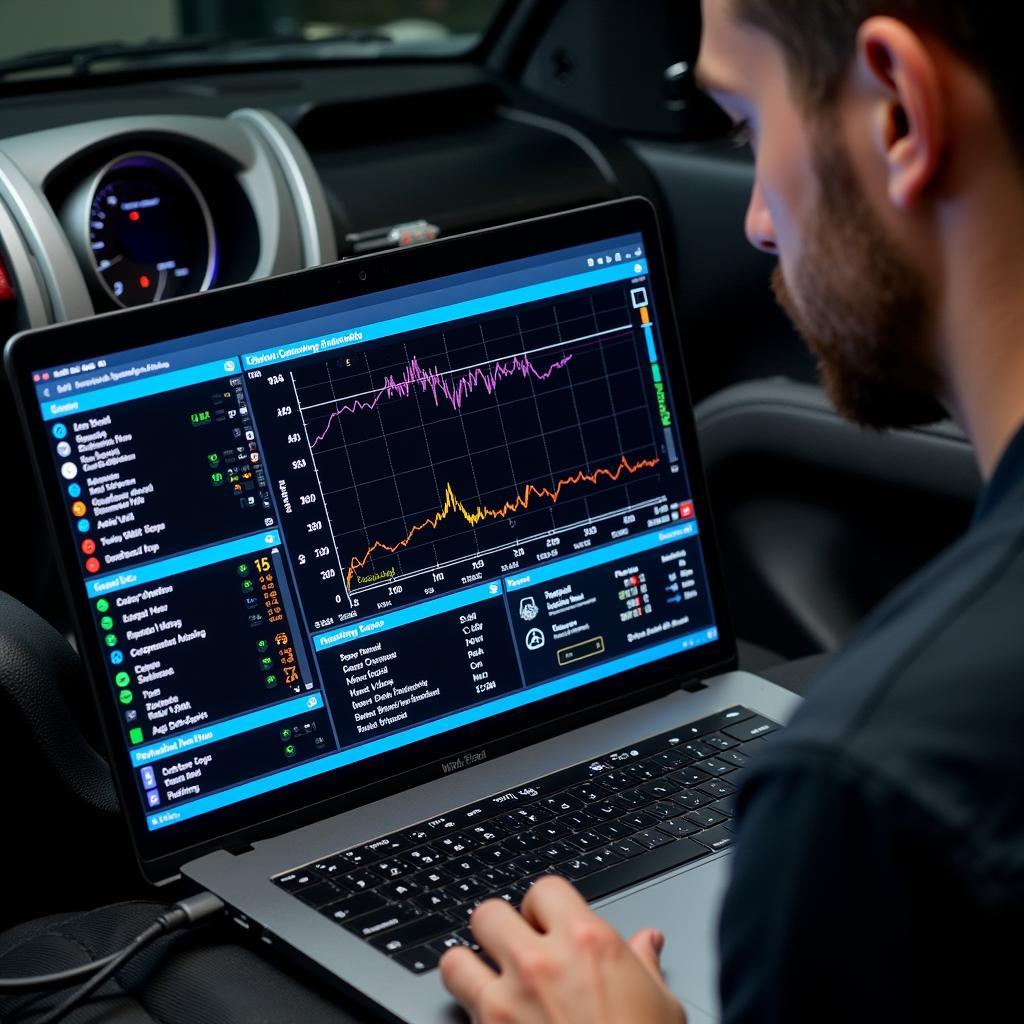A Car Scan Tool is an essential piece of equipment for any mechanic or car enthusiast. But What Do Scan Tools Connect To, exactly? Understanding this connection is key to effectively diagnosing and resolving vehicle issues. This article delves into the intricate network that scan tools tap into, empowering you to leverage their full potential.
Modern vehicles are complex systems controlled by a network of electronic modules, often referred to as Electronic Control Units (ECUs). These ECUs manage everything from engine performance and transmission shifting to airbag deployment and climate control. The scan tool acts as a bridge, allowing you to communicate with these ECUs and access the wealth of data they store.
Understanding the OBD-II Port: The Gateway to Your Car’s Data
The primary connection point for most scan tools is the OBD-II port, a standardized 16-pin connector typically located under the dashboard on the driver’s side. This port provides access to the vehicle’s communication network, enabling the scan tool to retrieve diagnostic trouble codes (DTCs), monitor real-time data streams, and even perform certain functions like resetting the check engine light.
What makes the OBD-II port so crucial is its standardization. Regardless of the vehicle’s make or model (as long as it’s OBD-II compliant), the port provides a consistent interface for accessing diagnostic information. This standardization has revolutionized automotive diagnostics, making it significantly easier for technicians and DIYers to troubleshoot car problems. Think of it like a universal language spoken by all modern vehicles.
Delving Deeper: The CAN Bus and Other Communication Protocols
Beneath the surface, the OBD-II port connects to the vehicle’s communication network, primarily the Controller Area Network (CAN bus). The CAN bus acts as a central nervous system, allowing the various ECUs to communicate with each other and share crucial data. The scan tool taps into this network, effectively listening in on the conversations between the ECUs. This allows it to gather information about the vehicle’s performance, identify malfunctions, and pinpoint the source of problems.
check engine light scan tool for sale
Beyond the CAN bus, some vehicles may utilize other communication protocols, such as LIN (Local Interconnect Network) or K-Line. More specialized scan tools can often communicate with these protocols as well, providing even more comprehensive diagnostic capabilities. This is especially important for working with older vehicles or those with unique communication systems.
How Does a Scan Tool Actually Communicate?
The scan tool uses specific commands and protocols to request information from the ECUs. Each ECU has a unique identifier, and the scan tool addresses these identifiers to retrieve specific data. This data is then translated into a user-friendly format on the scan tool’s display, allowing you to interpret the information and diagnose the problem.
Beyond Diagnostics: Advanced Scan Tool Capabilities
Modern scan tools offer a range of functionalities beyond simply reading diagnostic codes. Some advanced scan tools can perform bi-directional control, allowing you to activate specific components, such as fuel injectors or solenoids, to test their functionality. Others can perform programming and coding functions, enabling you to update software or configure settings within the ECUs. Similar to free online vulnerability scanning tools, these tools can identify potential weaknesses.
Choosing the Right Scan Tool for Your Needs
The right scan tool for you depends on your specific needs and budget. Basic code readers can retrieve DTCs and reset the check engine light, while professional-grade scan tools offer advanced functionalities like bi-directional control and programming capabilities. Understanding what do scan tools connect to allows you to choose a tool that is compatible with your vehicle’s communication systems and provides the necessary features for your diagnostic needs.
Conclusion
Understanding what scan tools connect to empowers you to effectively utilize this powerful diagnostic tool. From the OBD-II port to the intricate network of ECUs and communication protocols, scan tools provide a window into the inner workings of your vehicle. Whether you’re a professional mechanic or a DIY enthusiast, a scan tool is an indispensable tool for diagnosing and resolving car problems. For assistance, feel free to contact us at ScanToolUS at +1 (641) 206-8880 or visit our office at 1615 S Laramie Ave, Cicero, IL 60804, USA.
FAQ
-
What is the OBD-II port? The OBD-II port is a standardized 16-pin connector used to access a vehicle’s diagnostic data.
-
What is the CAN bus? The CAN bus is a communication network that allows the various ECUs in a vehicle to communicate with each other.
-
What are DTCs? DTCs (Diagnostic Trouble Codes) are codes stored in the vehicle’s computer that indicate specific malfunctions.
-
What is bi-directional control? Bi-directional control allows a scan tool to activate specific components in a vehicle to test their functionality. Similar to scan tool program key fob, this functionality can be very helpful in diagnostics.
-
What type of scan tool do I need? The type of scan tool you need depends on your specific diagnostic needs and budget.
-
Can I use a scan tool on any car? Most modern cars are OBD-II compliant, meaning they can be used with a standard OBD-II scan tool.
-
Where can I get more help with using a scan tool? You can contact us at ScanToolUS for further assistance with scan tools and vehicle diagnostics.


